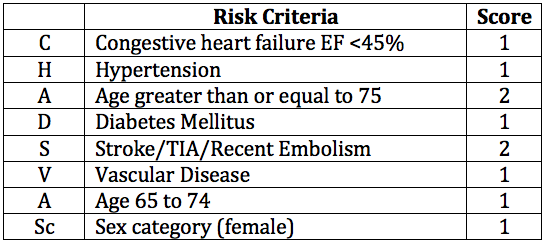Copy link
Afib: Stroke risk determination
Last updated: 06/08/2017
Atrial fibrillation (AF) is the most common disorder of the cardiac rhythm and confers an increased risk of stroke that is dependent on the presence or absence of various risk factors. The presence of AF increases the risk of stroke five-fold and contributes to at least 15% of all strokes.
The 2016 European Society of Cardiology (ESC) guidelines recommend using the CHA2DS2-VASc score to estimate stroke risk in non-valvular AF patients and to start oral anticoagulation (OACs) in men with a score of 1 or higher and women with a score of 2 or higher. Low risk patients, women with a score of 1 or men with a score of 0 do not need any anticoagulation.
NB: valvular AF, the presence of moderate to severe mitral valve stenosis and/or the presence of a mechanical prosthetic valve were excluded from studies used to validate the score.
Stroke prevention versus bleeding risk in AF can be addressed with the HAS-BLED (Hypertension, Abnormal renal/liver function, Stroke, Bleeding history or predisposition, Labile INR, Elderly, Drugs/alcohol concomitantly) score.

Table 1

Table 2
Copyright Information

This work is licensed under a Creative Commons Attribution-NonCommercial-NoDerivatives 4.0 International License.